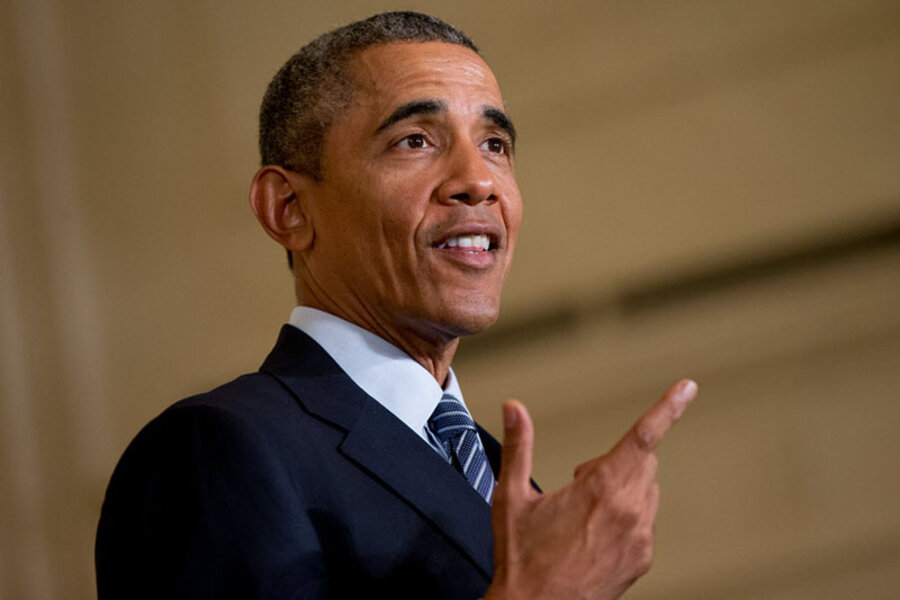Obama’s new Clean Power Plan, explained
Loading...
The Obama administration's Clean Power Plan, released Monday, will establish the first national standards to limit carbon pollution from power plants, the nation’s largest source.
A press release by the White House states “We already set limits that protect public health by reducing soot and other toxic emissions, but until now, existing power plants, the largest source of carbon emissions in the United States, could release as much carbon pollution as they wanted.”
The Environmental Protection Agency (EPA) will give each state its own goal to reduce emissions, but will grant each the authority to decide how they will meet it.
The final plan sets standards to reduce carbon dioxide emissions by 32 percent from 2005 levels by 2030, 9 percent more ambitious than last summer’s proposal, the press release notes.
The plan’s flexibility is an attempt to ensure its regulations do not interfere with the industry’s ability to maintain the reliability of the nation’s electricity supply.
Vox reports that "states will have to submit plans by 2018, and start cutting by 2022 at the latest and then keep cutting through 2030. If states refuse to submit a plan, the EPA will impose its own federal plan.”
According to the press release, the plan could have a significant positive effect on Americans' health.
It also estimates the creation of “tens of thousands of jobs” because of increasing “investment in cleaner, more modern, and more efficient technologies.”
As a result, it says, by 2030, “renewables will account for 28 percent of energy capacity,” which will lead to the average American saving nearly $85 a year on their energy bills in 2030, and total consumer savings of $155 billion between 2020 and 2030.
However, critics dispute the claim the plan will save consumers money.
According to National Public Radio, the chairman of coal company Murray Energy predicted on Monday that the regulations would lead to dramatic increases in the cost of electricity and said his company would challenge the regulations in court.
Others fault the scope of its environmental impact.
The Los Angeles Times editorial board thinks Obama’s plan “doesn’t go far enough.”
“It encourages the adoption of wind and solar but allows states to rely too much on natural gas, another fossil fuel, to meet their targets,” they said.
Some argue the plan’s effects will be insignificant since emissions already fell 15 percent between 2005 and 2013.
However, Vox notes otherwise:
“Many studies have found, US power-plant emissions aren’t destined to keep plunging without further policy. One big reason for last decade's drop was the massive recession, which hopefully won't repeat itself anytime soon. What's more, thanks to the shale gas boom, most of the "easy" cuts have already been made – as utilities switched from coal to cheaper gas. The harder cuts are yet to come, including making greater use of renewable power.”
Vox also finds a few states will be able to meet EPA’s targets with “pretty minimal effort.”
The Los Angeles Times reports California is one of them because it has “has practically eliminated coal from its energy portfolio and leads the nation with the toughest regulations to cut the greenhouse gas emissions that are warming the planet.”
The Clean Power Plan is part of a broader strategy by the White House, which has already been taking action through the President’s Climate Action Plan. According to their press release, they have already worked on fuel efficiency and greenhouse gas standards for medium- and heavy-duty vehicles; access to solar energy for low-income Americans; and cutting methane emissions from oil and gas systems, landfills, coal mining, and agriculture.
The plan also aims to spark global action on climate change by demonstrating American initiative in its efforts to meet their own targets for carbon emissions.







